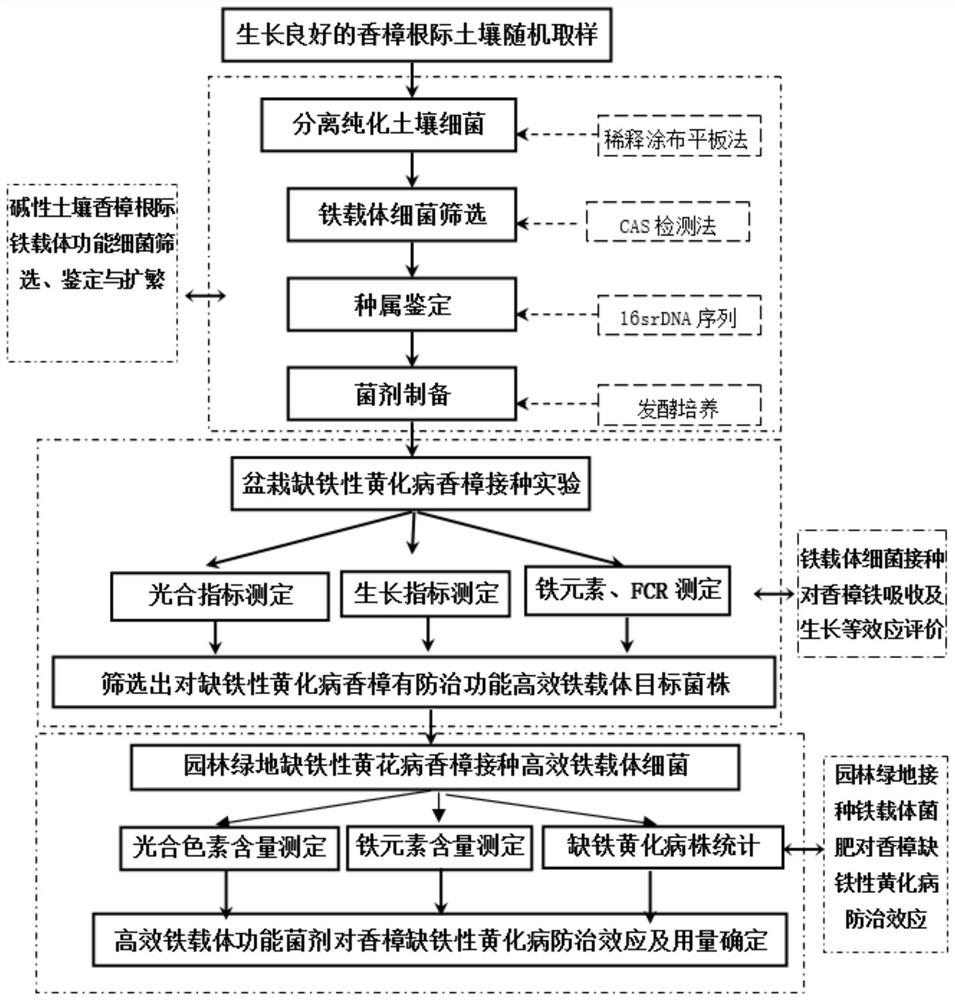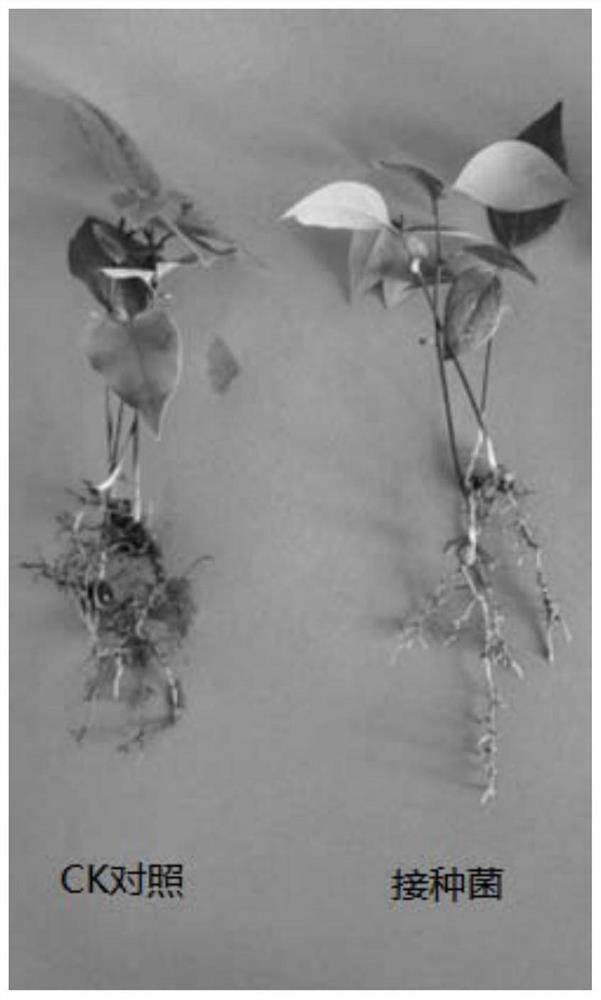Application of siderophore plant-growth-promoting rhizobacteria
A rhizosphere growth-promoting bacteria and siderophore technology, applied in the field of microorganisms, can solve the problems of high cost, soil acidification or salinization, and long time required, and achieve the goals of increasing plant height, long-lasting effect, and preventing acidification Effect
- Summary
- Abstract
- Description
- Claims
- Application Information
AI Technical Summary
Problems solved by technology
Method used
Image
Examples
Embodiment 1
[0026] Embodiment one: Fermentation of siderophore rhizosphere growth-promoting bacteria
[0027] The fermentation method of the siderophore rhizosphere growth-promoting bacteria is as follows: transfer the spindle-shaped lysine bacillus to the LB liquid medium with a pH of 8.0-10.0, and shake it at 26-30°C and 140-160r / min until Obtain the seed bacterial liquid in the logarithmic growth phase; inoculate the seed bacterial liquid in the fresh LB liquid medium with a pH of 8.5-10.5 according to the inoculation amount of 2% by volume, and shake it under the conditions of 26-30°C and 140-160r / min Cultivate and ferment for 40-48 hours to obtain a fermented liquid.
[0028] Calculate the number of effective viable bacteria in the fermentation broth by means of plate counting, then centrifuge the fermentation broth, discard the supernatant, and dilute the fermentation broth with water so that the concentration of viable bacteria is 10 9 CFU / mL fermentation diluent for later use.
Embodiment 2
[0029] Embodiment two: Potted camphor is inoculated with spindle-shaped lysine bacillus
[0030] Camphor seedlings: Camphor seeds come from Xuzhou Seed Co., Ltd., select full-grained camphor seeds, soak them in hot water at 70-80°C, the volume ratio of water to seeds is 2:1, stir well until the water temperature is 50-60 between 28°C and 28°C, cool naturally, take it out after 24 hours, wrap it in a wet towel after cleaning, and place it in the incubator to accelerate germination. Wash it once a day to remove the sticky matter on the surface of the seeds. , after the seeds emerge, transplant them into pots.
[0031] Select 10 pots of camphor seedlings, of which 5 pots are used to inoculate spindle-shaped lysine bacillus, and water once after 2 months of emergence with a live bacterial concentration of 10 9CFU / mL fermentation diluent 50ml, the other 5 pots were not inoculated with spindle-shaped lysine bacillus (CK control group), watered 50ml of tap water once as a control at...
Embodiment 3
[0044] Embodiment three: camphor tree inoculated with spindle-shaped lysine bacillus
[0045] The live bacteria concentration was 10 9 CFU / mL fermented diluent is poured or sprayed in the garden green land planted with camphor trees; the soil properties of the green land are shown in Table 4, and each camphor tree is inoculated with 2L or 4L, inoculated in spring, and the two inoculation treatments are separated by half a month Carry out the second inoculation, measure chlorophyll and the iron element content in the leaf after the second inoculation 1 month, count the yellowing situation of camphor, first observe the whole plant situation of the plant, then the upper, middle and lower three layers of the camphor tree crown, One branch was taken from each layer in the southeast and northwest for specific statistics. The overall and specific statistics were considered comprehensively, and the yellowing level of the plants was classified. The results are shown in Table 4.
[004...
PUM
 Login to View More
Login to View More Abstract
Description
Claims
Application Information
 Login to View More
Login to View More - R&D
- Intellectual Property
- Life Sciences
- Materials
- Tech Scout
- Unparalleled Data Quality
- Higher Quality Content
- 60% Fewer Hallucinations
Browse by: Latest US Patents, China's latest patents, Technical Efficacy Thesaurus, Application Domain, Technology Topic, Popular Technical Reports.
© 2025 PatSnap. All rights reserved.Legal|Privacy policy|Modern Slavery Act Transparency Statement|Sitemap|About US| Contact US: help@patsnap.com



